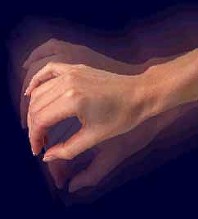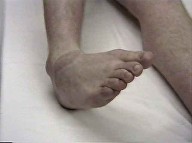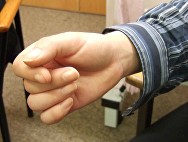


This section is based mainly on the authors own experience in trying to assist many patients with functional movement disorders to get better.
If you haven’t read them yet, have a look at these sections before you read on:
We are still learning more about what kinds of treatment work best for patients with functional weakness.
Understanding it
It can be surprising how much impact simply receiving a clear and understandable explanation for the symptom can have. Often patients with functional movement disorder may have gone months or even years without a diagnosis (or sometimes with an alternative diagnosis like Parkinson’s disease).
It can take a long time to ‘get your head’ around being diagnosed with a functional movement disorder. For patients that do start to feel better, doing this seems to be an important part of it
Seeing how it fits in with all your other symptoms can also be an important part of understanding it. It can help to understand that your weakness is one symptom among many (usually pain, fatigue and sleep disturbance) and that you have one illness with many symptoms, not many symptoms caused by different diseases.
These include
Intermittent movement disorder
Some patients with tremor experience ’bouts’ of tremor. These episodes may be preceded by dissociative symptoms. Although patients with this do not black out, the advice on treatment and learning to avert attacks may be similar to that for dissociative seizures. Have a look at the treatment of functional seizures and see if anything applies to you.
Think about how variable it is
Variability is a common feature of many functional symptoms. If you think about it, its one reason why the diagnosis of functional symptoms makes sense. If there was structural damage to the nervous system, the symptom might fluctuate a bit but not dramatically as it can do with functional movement disorders.
There are several reasons why functional movement disorders can vary in severity:
This last one is worth some thought. You may have noticed that the more attention you pay to your movements the worse they get.
Try, as much as possible, not to think about your movements. Remember that with functional movement disorder you are trying to regain control of a limb that may not feel completely like ‘yours’.
Sometimes patients report that having their tremor or abnormal posture feels ‘natural’ whereas having a limb that is in the normal position or still feels unnatural.
You may need to train your brain so that the normal position starts to feel natural again. Read Anna’s Story on the Cases page for an example of this.
Try these specific things for individual symptoms.
(with thanks to Glenn Nielsen, Physiotherapist at Institute of Neurology, London)
Physiotherapy
All of these need to be practised repeatedly, and many will seem impossible or difficult to begin with. You are trying to break a ‘habit’ in your brain, that is not easy to do.
It may be worth trying hypnosis. Sometimes under hypnosis, tremor may improve and you may be able to learn self hypnosis to practice at home.
Link with anxiety
Functional tremor, can in some patients, be especially linked to anxiety.
Commonly feelings of anxiety link to the tremor itself, what will people think about me? Am I going to start shaking all over? Will that be embarrassing? But these are still feelings of anxiety.
Many patients with functional tremor don’t have anxiety, but if you do, it may be important to face up to that and seek specific treatment directed at controlling excessive worry. This can sometimes help.
Some patients report that episodes of tremor appear to ‘get rid’ of a build up of hard to describe, tense, dizzy symptoms. They don’t want the tremor to happen, but recognise that when it does (if it happens as ‘episodes’) that it does seem to lessen those feelings. If this applies to you then it may be useful to discuss that with your treating health professional.
We are still learning what specific techniques are most helpful for functional dystonia. As a general principal, trying to move the affected part is really important, although if it’s fixed this may not be possible.
Some of the following may be helpful.
Additional treatments that are sometimes used in functional dystonia include:
Hypnosis . In a state of hypnosis some people become aware that the dystonia improves or even disappears temporarily. Learning to experience the altered state of being in hypnosis or carrying out ‘self-hypnosis’ can be helpful for some patients
Sedation. This is only potentially useful in patients with ‘fixed’ dystonia who are unable to experience their limbs in a normal position at any other time. This also allows examination for any contractures. If this is handles correctly it can encourage normal movements which the patient has not experienced for a long time. This should only be carried out if your doctor has experience with this technique. It is not a ‘cure-all’ for fixed dystonia.


We will be re-directing you to the University of Edinburgh’s donate page, which enable donations in a secure manner on our behalf. We use donations for keeping the site running and further FND research.
